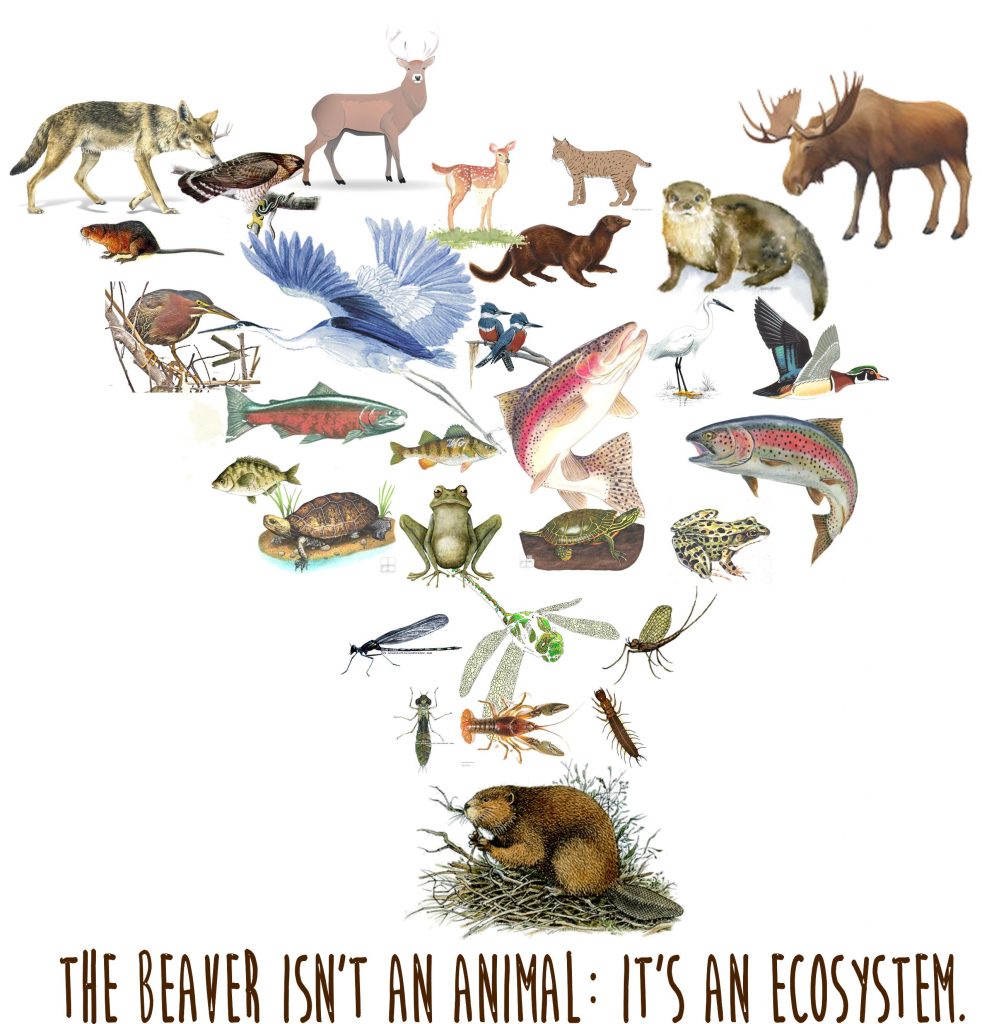In honor of the day, we want to celebrate beaver being a keystone species, meaning the habitats they create benefit countless other plant and animal species in California ecosystems.
Species of Special Concern, Threatened and Endangered Species
- Cascades frog
- Western Pond Turtle
- Willow Flycatcher
- Sage Grouse
- Fish species including Coho, Chinook and Steelhead, Lahontan Cutthroat, and Tidewater Goby.
Fish:
- Salmon, trout, and others: Beavers create ponds and wetlands that provide habitat for myriad fish species. These wetlands offer shelter, breeding grounds, food, and protection for juveniles.
Amphibians:
- Frogs, Toads, and Salamanders: Beaver wetlands support frogs, toads, and salamanders by providing breeding sites and suitable areas for their survival.
Reptiles:
- Pond Turtles: Wetlands established by beavers serve as essential nesting, foraging, and basking sites for pond turtles.
- Snakes: Beaver ponds and wetlands create habitat utilized by a number of garter snakes.
Birds:
- Waterfowl: Beaver ponds attract ducks, geese, swans, and others, offering nesting sites, food sources, and refuge from predators.
- Songbirds: The wetlands and forests resulting from beaver activity provide nesting sites, food sources, and shelter for a wide range of songbird species.
- Wading and Waterbirds: Various waterbirds like herons, egrets, and kingfishers benefit from the increased availability of aquatic habitats created by beavers.
- Raptors: Beavers contribute indirectly to the survival of Osprey and other raptors by enhancing the prey base of small mammals, birds, and fish in their ecosystems.
Mammals:
- River Otters and mink: Beaver ponds often attract river otters and mink that benefit from the fish and other resources available in these aquatic habitats.
- Muskrats: These semi-aquatic rodents frequently use beaver ponds and wetlands as a food source and as a sheltered environment.
Insects and Invertebrates:
- Dragonflies and Damselflies: Beaver ponds provide suitable habitats for these flying insects during their aquatic larval stages.
- Aquatic Invertebrates: The creation of wetlands and the slowing of water flow by beaver dams foster diverse communities of aquatic invertebrates, which serve as a vital food source for various species higher up in the food chain.
Plants:
- Riparian Vegetation: Beavers play a crucial role in shaping riparian (streamside) ecosystems by felling trees and building dams. This activity leads to the creation of wetlands, increased water retention, and the growth of diverse vegetation along waterways.
- Wetland Plants: Beaver ponds support the growth of wetland plants such as cattails, sedges, and water lilies, which provide habitat, food, and nesting materials for numerous species.






